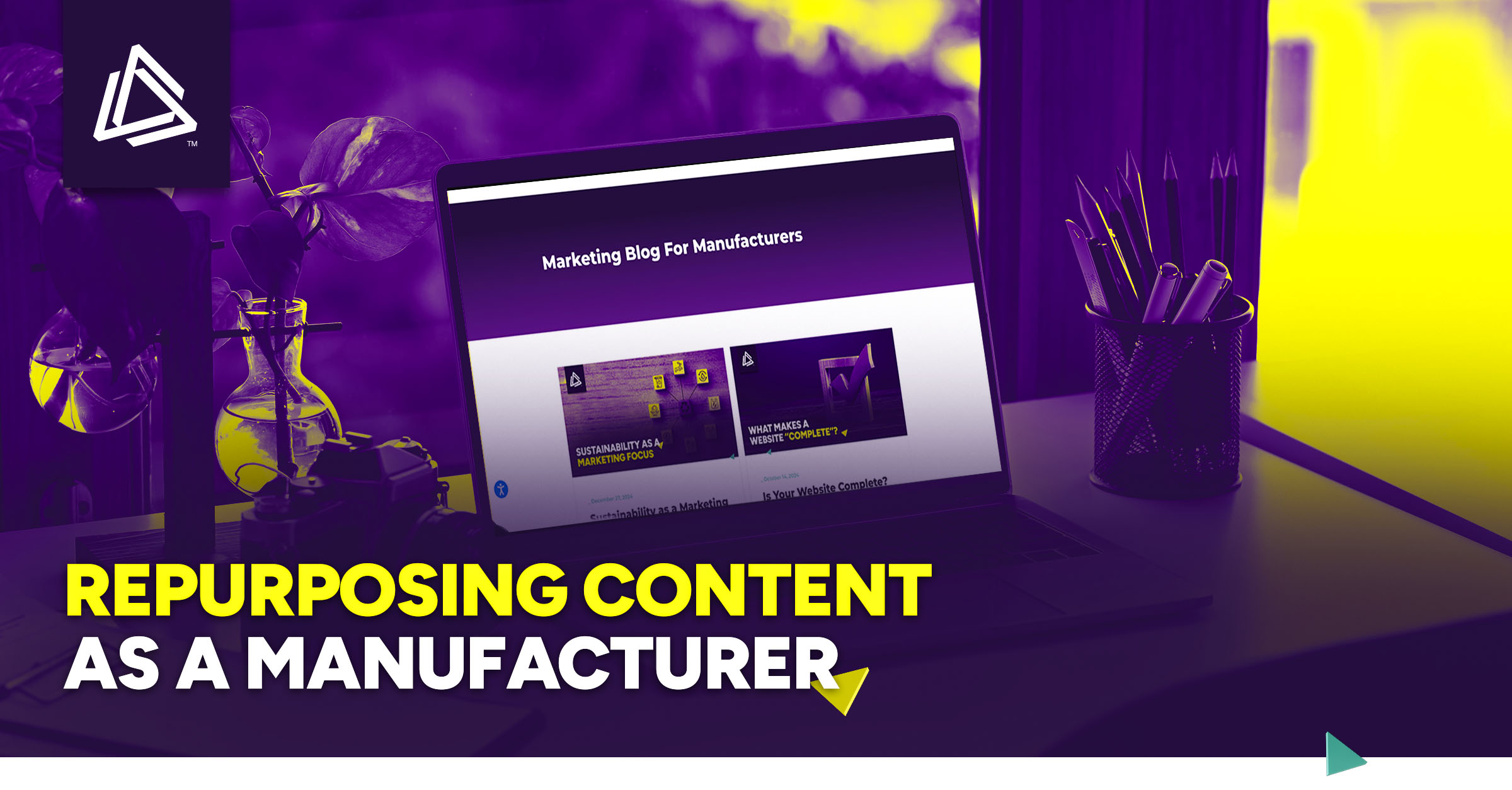Producing high-quality content marketing for manufacturers with limited budgets is a common challenge. Creating fresh material takes time, effort, and resources, but there’s a smarter way to make the most of what you already have. Content repurposing allows you to take existing blogs, webinars, white papers, and case studies and adapt them for different formats and platforms. This approach increases the reach and impact of your efforts while delivering better value.
Let’s dive in and explore how repurposing content can be a smart digital marketing solution for manufacturers to expand their audience, maintain consistent messaging, and save valuable time — essential benefits in a competitive industry.
The Benefits of Repurposing Content
Efficiency in Content Marketing for Manufacturers
Repurposing ensures you get the most out of the content you’ve already created. Instead of starting new projects from scratch, you can focus on adapting your existing materials to reach new audiences. This manufacturing marketing strategy streamlines your workload and keeps the marketing pipeline flowing without overextending your resources.
Extended Audience Reach
Not everyone consumes content the same way. While some prefer detailed blog posts, others might engage more with videos or social media snippets. Repurposing your content helps meet people where they are, making sure your message is heard across multiple platforms and formats.
Stronger, Consistent Messaging
Consistent communication builds trust. When you rework content for different channels, you reinforce the same core ideas in a variety of ways, helping your audience understand your value proposition without overwhelming them with repetitive messaging.
Repurposing Ideas for Common Content Types
Blogs
Blogs can be broken down into smaller pieces or expanded into more detailed formats. For example, a technical blog might inspire a LinkedIn article, a series of social media posts, or an infographic summarizing key points.
Webinars
A recorded webinar isn’t just a one-time event – it can be turned into an on-demand resource, a blog post recap, or a highlight reel for social media. Pulling specific insights from a webinar can also generate short, impactful video clips for targeted audiences.
White Papers
Dense white papers often hold untapped potential. The data and findings can be reimagined into shorter blog posts, infographics, or even slide presentations. Highlighting key stats or visuals makes the content more digestible for different audience segments.
Case Studies
Case studies, with their real-world success stories, are versatile and impactful. They can be converted into video testimonials, summarized to use in email marketing for manufacturers, or shared as customer quotes on social media. The results and insights showcased in a case study are perfect for reinforcing credibility.
Strategies to Make Repurposing Work for You
Tailor Content for Different Audiences
One size doesn’t fit all in content marketing for manufacturing companies. Engineers might need technical details from a white paper, but executives may prefer a high-level overview. Adjusting the tone and depth of your content ensures it resonates with specific audience groups.
Customize for Each Platform
Every platform has its quirks, so it’s important to format content appropriately. A detailed blog post might become a visual-heavy LinkedIn carousel, while a webinar recap could be condensed into a series of Instagram stories. Adaptation makes your content more engaging and relevant.
Break Down Long-Form Content
Repurposing doesn’t always mean starting big and scaling down, but it’s a great place to start. A comprehensive white paper or webinar can generate multiple pieces of shorter content, including blog excerpts, quotes for use in social media marketing for manufacturers, and key visuals for infographics.
Cross-Promote Between Channels
Cross-promotion creates a web of interconnected content. For instance, share a webinar clip on LinkedIn with a link to the full recording on your website, or highlight case study results in a blog and link back to the complete study. An interconnected strategy like this ensures consistent traffic across your marketing ecosystem.
Tools and Tips for Successful Repurposing
- Visual Creation: Use tools like Adobe Illustrator or Canva to turn blog excerpts or white paper highlights into eye-catching graphics.
- Social Media Scheduling: Platforms like Hootsuite can help you maintain a steady flow of content and track engagement.
- Performance Analysis: Measure what works by tracking engagement, click-through rates, and lead generation to refine your approach over time.
How to Measure the Impact
Tracking the results of repurposed content provides valuable insights into its effectiveness. Focus on metrics like:
- Engagement Rates: Monitor how often content is viewed, shared, or clicked.
- Lead Generation: Evaluate how repurposed content drives form submissions, webinar sign-ups, or direct inquiries.
- Cost Efficiency: Compare the time and resources required to repurpose content versus creating new materials to see the financial benefits.
Takeaways
Repurpose smarter, not harder! Maximizing the value of your content doesn’t have to be complicated. Reworking existing materials helps you stay consistent, reach new audiences, and make every dollar count. Blogs, webinars, white papers, and case studies are all opportunities to connect with your audience in fresh and meaningful ways.
If you’re ready to make the most of your content library, Vive Marketing can help. We specialize in marketing for manufacturers that prioritizes impact and efficiency. Reach out today to see how repurposing content can work for your business!

